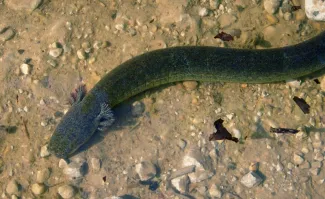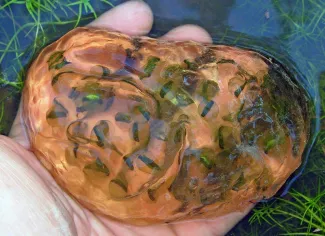With rotting logs and leaf litter scattered across the forested uplands, and streams and wetlands in lowland areas, Red Slough WMA provides the right mixture of habitat for salamanders. These smooth-skinned amphibians are rarely active during the day and most instead burrow into dark, damp areas to pass away the day.

For avid wildlife watchers, the swampy habitat and opportunity for adventure are reasons enough to visit Red Slough Wildlife Management Area. The chance to see salamanders, including the fully aquatic, eel-like, western lesser siren, is just an icing topper for the trip.
Salamanders can breathe, or exchange gasses in a number of ways. Some species, like lesser sirens, are fully aquatic and retain external gills throughout their life. Others, like the spotted salamander can uptake oxygen through their skin as well as their functioning lungs. Species like slimy salamanders are “lungless” and rely fully on their skin for respiration. Because the skin plays such a vital role in breathing, salamanders may die if they become dehydrated or if their skin dries.

Spotted salamander eggs.
Early spring and late fall rain events trigger reproduction for many species of salamanders. Mass migrations to small streams and fishless pools of water leads to courtship rituals, and for some species, eventually to egg masses. These masses are laid on submerged sticks and vegetation or on the bottom of the pool. Some species, like the marbled salamander, lay eggs in a sandy depression and wait for rains to fill the depression with water.
Salamanders are carnivores and eat a wide variety of insects, worms and spiders.
Five species of salamanders have been documented at Red Slough WMA. Learn more these amphibians in the Wildlife Department’s online field guide.